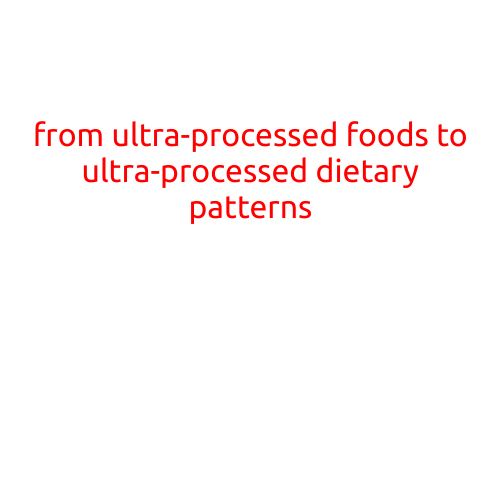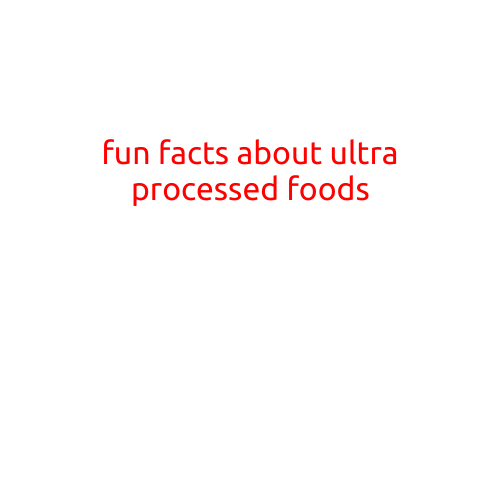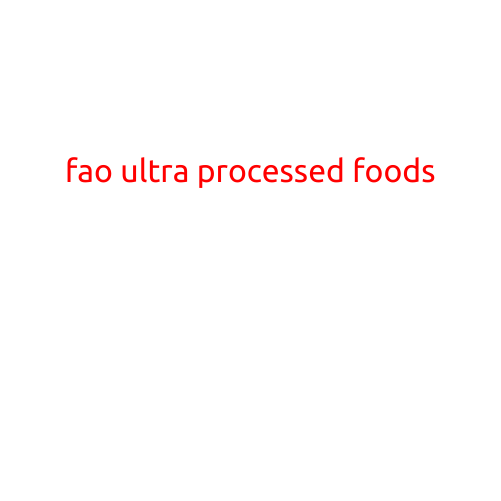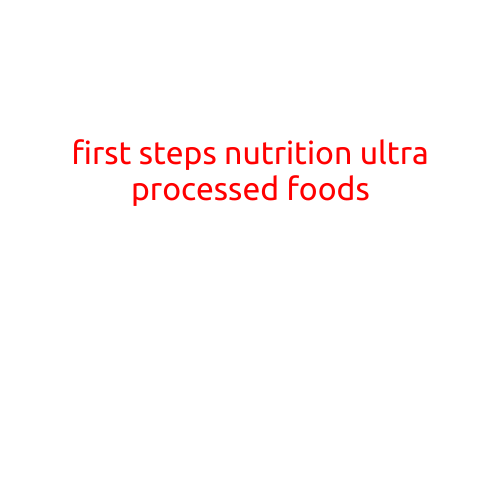
Food Insecurity and Ultra-Processed Foods: A Deadly Combination
Food insecurity, a condition where individuals lack access to enough food for an active and healthy life, is a pervasive problem globally. According to the United Nations Food and Agriculture Organization (FAO), over 820 million people worldwide suffered from hunger in 2018. Furthermore, many people who are food secure may still experience food insecurity due to limited access to healthy and nutritious food. Ultra-processed foods, which are high in added sugars, saturated fats, and sodium, have become a staple in many households, exacerbating this issue.
What are Ultra-Processed Foods?
Ultra-processed foods are products that have undergone significant industrial transformation, such as adding preservatives, flavor enhancers, and other ingredients to extend shelf life and enhance taste. These foods are often highly palatable and affordable, which can be appealing to individuals and families struggling to make ends meet. Examples of ultra-processed foods include:
- Frozen pizzas
- Packaged snacks (e.g., chips, crackers)
- Sugary drinks (e.g., soda, sports drinks)
- Refined grains (e.g., white bread, sugary cereals)
- Pre-prepared meals (e.g., TV dinner meals)
The Impact of Food Insecurity on Ultra-Processed Foods
Food insecurity can drive the consumption of ultra-processed foods in several ways:
- Limited access to fresh produce: Individuals with food insecurity may not have access to fresh fruits and vegetables, leading them to rely on ultra-processed foods as a filling and affordable alternative.
- Lack of cooking skills: Without access to recipes, cooking techniques, and food education, many individuals may not know how to prepare healthy meals from scratch, opting for ultra-processed foods instead.
- High calorie density: Ultra-processed foods are often high in calories, making them appealing to individuals who need quick, filling meals to sustain themselves.
- Affordability: Ultra-processed foods are often cheaper than whole, unprocessed foods, making them a more accessible option for those living on a tight budget.
The Consequences of Combining Food Insecurity and Ultra-Processed Foods
The consumption of ultra-processed foods in the context of food insecurity can have severe health consequences, including:
- Increased risk of chronic diseases: Consuming high amounts of ultra-processed foods has been linked to an increased risk of developing chronic diseases, such as obesity, type 2 diabetes, and heart disease.
- Nutrient deficiencies: Ultra-processed foods are often lacking in essential nutrients, leading to nutrient deficiencies and impaired overall health.
- Poor mental health: The stress and anxiety associated with food insecurity can exacerbate mental health issues, while the consumption of ultra-processed foods can further contribute to feelings of low self-esteem and sadness.
Breaking the Cycle: Strategies to Combat Food Insecurity and Ultra-Processed Foods
To address the issue of food insecurity and ultra-processed foods, several strategies can be employed:
- Food assistance programs: Governments and non-profit organizations can establish programs to provide access to healthy, whole foods, such as food banks and mobile farmers’ markets.
- Cooking education: Teaching cooking skills and food education can empower individuals to prepare healthy meals from scratch, reducing reliance on ultra-processed foods.
- Affordable food options: Grocery stores and food retailers can offer affordable, whole food options, such as bulk purchasing and discount programs.
- Food policy changes: Governments can implement policies to promote healthy eating, such as taxes on sugary drinks and subsidies for whole grains.
Conclusion
Food insecurity and ultra-processed foods are a deadly combination that can have severe health and social consequences. To combat this issue, it is essential to address the root causes of food insecurity, provide access to healthy food options, and promote cooking education and food literacy. By working together, we can break the cycle of food insecurity and ultra-processed foods, promoting a healthier, more equitable food system for all.





